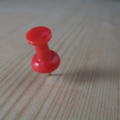Getting Clients to Sign Your Interior Design Contract
Interior designers have a common saying you’ll hear all the time. While it might vary from person to person and region to region, it goes something like this: Doing the work is easy, getting the clients is the hard part. For most designers, that old saying will definitely ring true.
Finding new prospects and setting up meetings with potential clients is only the first step though. To make any money and get the project going, you’re going to need a potential client to become a real client by signing your interior design contract. Easier said than done, right?
Getting clients to sign your interior design contract doesn’t have to be a constant uphill battle. You just need to know how entice clients and make them feel like you’re the only designer that’s right for their project. Keep reading to learn more about how you can get prospective clients to sign on the dotted line whether you’re dealing with a small single room hardwood flooring upgrade or a large-scale design project.

How to Win an Interior Design Contract
Create a Killer Brief
An interior design brief can be viewed somewhat like a sketch before an oil painting. In the simplest terms, a brief outlines your goals and ideas along with how they align with the client’s needs and desires.
Interior design briefs should be short, to the point and generally a few pages or less. Think of them as summary bullet points of a novel. Break down the key elements and the broad strokes to show your client you’re moving in the right direction. Doing this will give them the confidence in you to sign your contract now without shopping around or considering just buying retail.
Here are a few key components of an interior design brief:
- Main objectives. What’s the overall feel, function and design of the space like?
- Room usage. How will rooms be used? This is an especially important part of your brief if you’re working with a home your client just purchased.
- Budget goals. What’s the budget of the overall project and how will you meet it?
- What does the timing of the job look like? When do you plan to complete work for your client? What about steps along the way. This section can be a little more detailed if you’re dealing with a large renovation. Keep it simple if you’re only doing one or two things like painting and installing wood, stone or vinyl flooring.
- Sustainability and special factors. Is purchasing sustainable materials important for you or your client? What about other special needs like ensuring that certain rooms are safe for pets and kids? You can include some of this information in your room usage section, but if you’re looking for things like low VOC materials, you may want to outline this in a separate section.
Have Products Prospective Clients Will Love
A clear, concise brief can go a long way, but you need products that your clients will love if you want to seal the deal. Here are a few ways you can match products to your clients based on their needs and budget:
- Have engineered wooden floor samples for spaces that need to be durable. These are especially smart for high-end homes with tons of pets and kids.
- Be prepared to show off high-end wood samples like white oak hardwood and cherry hardwood for designer-inspired spaces. Solid oak flooring is a particularly popular choice right now.
- Carry specialty finishes with you to meetings, including matte, high-gloss and distressed flooring styles. Millennial clients and more modern buyers may also opt for specialty designs like concrete look flooring.
Don’t have what you need to show your clients right now? Let them know you understand the look you’re going for and get samples they can see in person right away by reaching out to us now.

Know Your Own Contract
A prospective client meeting is successful when you and the client feel like you’re on the same page and can do excellent work together. In early talks, that team spirit and momentum can come to a grinding halt when it’s time to pull out the contract. In many cases, it’s because the designer isn’t clear about what their contract will entail for that client.
Before you go to a client meeting, take the time to consider what you’ll need from your client to get the ball rolling on any sort of project. What are your hard and fast demands? What are you willing to negotiate with clients on, if anything?
If you’re a smaller designer, you may want to wait until you speak with a client about their needs to draw up a contract. Custom contracts can help you cater to your client’s needs, which could be particularly important if you’re trying to get off the ground.
Be Clear About Your Needs
Whether you’re an established designer with tons of clients or you’re just starting a new one-person business or a firm, you have certain needs in order to do any work. After all, you can’t very well work for free, can you?
One important part of creating a functional interior design contract is laying out exactly what you need to get the job started. Even more important, you need to tell clients what you need to do a good job and give them a space they’ll truly love.
Do you need a retainer? Most designers do since you can’t very well begin a project and put in many hours only to have clients back out down the road.
Do you need a certain amount of time to get the work done and you know you can’t deliver faster? Include all of this in your contract. Clarity is key if you’re going to get new design clients and give them your best possible work.
Getting clients to sign your design contract shouldn’t be a difficult task if you connect with them and know you can do the work. While we can’t help you sell, we can help you get the real wood flooring, engineered wood flooring and high-quality sale flooring you need for clients working with any budget.
BuildDirect Can Help
Reach out to our trained customer service representatives today so you can get the samples you need to wow your clients. We’ll be here to help when your client signs your contract and it’s time to place your larger order too.




